Planning worship?
Check out our sister site, ZeteoSearch.org,
for 20+ additional resources related to your search.
- |
User Links
Person Results
Wolfgang Amadeus Mozart
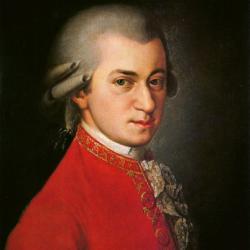
1756 - 1791 Person Name: Mozart Topics: Adoration; Aspirations For Church Priveleges; Blessedness Of Those Obeying Christ; Christians Growth of; Enemies Destruction of; God Faithfulness of; God Holiness of; God Love and Mercy; God Righteousness of; God Works of; Grace Abounding; Grace Growth in; Grace Quickening; Grace Restoring; Grace Sustaining; Joy Reasons for; Morning Psalms; Nature An Emblem of Grace; Old Age; Praise Fitness of; Praise For God's Goodness; The Christian's Reward; The Righteous Honor and Safety of; Royalty of Christ Judgment the Prerogative of; Temperance Songs; Thanksgiving Declared; The Wicked Fate of; Worship Delightful to Saints; Worship Family Composer of "ELLESDIE" in The Psalter Wolfgang Amadeus Mozart Austria 1756-1791. Born at Salzburg, Austria, the son of Leopold Mozart, a minor composer and violinist, and youngest of seven children, he showed amazing ability on violin and keyboard from earliest childhood, even starting to compose music at age four when his father would play a piece and Mozart would play it exactly as did his father. At five, he composed some of his own music, which he played to his father, who wrote it down. When Mozart was eight, he wrote his first symphony, probably transcribed by his father. In his early years his father was his only teacher, teaching his children languages and academic subjects, as well as fundamentals of their strict Catholic faith. Some of his early compositions came as a surprise to his father, who eventually gave up composing himself when he realized how talented his son was. His family made several European journeys and he and his sister, Nanneri, performed as child prodigies, at the court of Prince-elector Maximillian II of Bavaria in Munich, and at the Imperial Courts in Vienna and Prague. A long concert tour followed, for 3.5 years, taking the family to courts in Munich, Mannheim, Paris, London, Dover, The Hague, Amsterdam, Utrecht, Mechelen, and again to Paris, and back home via Zurich, Donaueschingen, and Munich. During these trips Mozart met many musicians, acquainting himself with the works of other composers. He met Johann Christian Bach in London in 1764. Family trips were challenging, and travel conditions were primitive. They had to wait for invitations and reimbursements from nobility, and they endured long, near-fatal illnesses far from home. First Leopold (1764) got sick, then both children (1765). They traveled again to Vienna in 1767 and stayed there over a year. After a year back in Salzburg, Leopold and Wolfgang went to Italy (1769-1771), Leopold wished to display his son’s abilities as a performer and maturing composer. In Bologna, Italy, Wolfgang was accepted as a member of the famous Academia Filamonica. In Rome he heard Gregorio Allegri’s Miserere twice in performance. Back in the Sistine Chapel, Mozart wrote the whole performance out from memory, thus producing the first unauthorized copy of this closely guarded property of the Vatican. In the next few years Mozart wrote several operas performed with success in Italy, but his father’s hopes of securing a professional appointment for his son were not realized. At age 17 he was engaged as a musician at the Salzburg court, but grew restless and traveled in search of a better position. After returning to Salzburg, Mozart was employed as a court musician by the ruler of Salzburg, Prince Archbishop Hieronymus Colloredo. This gave Mozart ample opportunity to develop relationships with other musicians and his admirers, resulting in his development of new symphonies, sonatas, string quartets, masses, serenades, and some minor operas. In 1775 he wrote his only violin concertos, five in all. Again, he was discontent with work in Salzburg and traveled to find more opportunity to write operas. He and his father again visited Munich and Vienna, but neither visit was successful with the exception of his opera ‘La finta giardiniera’ in Munich. In 1777 he resigned his Salzburg position and went to Augsburg, Mannheim, Paris, and Munich again. In Mannheim he met and fell in love with Aloysia Weber, one of four daughters of a musical family. He could find no real employment there and left for Paris in 1778. He might have had a position as organist at Versailles, but he was not interested in that. He fell into debt and started pawning valuables. During these events his mother died. Meanwhile his father was still trying to find him a position in Salzburg. After checking out several other European cities and Munich, he again encountered Aloysia, but she was no longer interested in him, so he returned to Salzburg, having written another symphony, concerto, and piano sonata, and took the new appointment his father had found. However, he was still in discontent. Visiting Vienna in 1781, he was dismissed from his Salzburg position. He wrote another opera, ‘Idomeneo’, in 1781, that was successful in Munich. Two months later he was summoned to Vienna, where his employer, Archbishop Colloredo, wanted him around due to his notoriety. Mozart wished to meet the emperor and perform for him, and finally got that opportunity. It resulted in a part-time position and substantial commissions. Colloredo became a nemesis to Mozart’s career, finally releasing Mozart from his employ with a literal kick in the pants, much against his father’s wishes. However, he was now independent. Mozart then decided to settle in Vienna as a free lance performer and composer. He lived with the Fridolin Weber family, who had moved from Mannheim to Vienna. Fridolin, the father, had died, and they were taking in lodgers to make ends meet. His career there went well, and he performed as a pianist before the Emperor, establishing himself as the finest keyboard player in Vienna. He wrote another opera in 1782, again achieving success. Mozart had now become a prolific and influential composer of the Classical period and was known throughout Europe. Aloysia was now married to actor, Joseph Lange, and Mozart’s interest shifted to her sister, Constanze. In 1782 he married Constanze Weber Mozart Nissen. The marriage started out with a brief separation, and there was a problem getting Mozart’s father’s permission, which finally came. They had six children, but only two survived infancy: Carl and Franz. He lived in Vienna and achieved some notoriety, composing many of his best-known symphonies, concertos, and operas. In 1782-83 he became intimately acquainted with Johann Sebastian Bach and George Friederic Handel, as his friend, Gottfried van Swieten, owned many manuscripts of the Baroque masters, which Mozart studied intently. He altered his style of composition as a result. That year Mozart and his wife visited his father and sister, and he composed a liturgical piece, a Mass, with a singing part for his wife. He also met Joseph Hadyn in Vienna in 1784 and they became friends. They even played together in a string quartet from time to time. Mozart wrote six quartets dedicated to Hadyn. In 1785 Hadyn told Leopold Mozart, “Your son is the greatest composer known to me by person and repute, he has taste, and what is more, the greatest skill in composition”. Over the next several years Mozart booked several piano concertos in various places as a sole performer to delighted audiences, making substantial remuneration for his work. He and his wife then adopted a more luxurious lifestyle. They moved to an expensive apartment and he bought a fine fortepiano and billiard table. They sent their son, Karl, to an expensive boarding school and also kept servants. In 1784 Mozart became a Freemason and even composed Masonic music. Over the next several years he did little operatic writing and focused on his career as a piano soloist and writer of concertos. He again began operatic collaboration in 1785, creating ‘The marriage of Figaro’, then ‘Don Giovanni’ in 1787. That year his father died. Also that year he obtained a steady post under Emperor Joseph II as his chamber composer. This was part-time employment that was important when hard times arrived. However, Joseph aimed at keeping Mozart from leaving Vienna for better work. The Austrio-Turkish War made life difficult for musicians, and his aristocracy support had declined. He moved to save on expenses, but that did not help much, and he was reduced to borrowing funds from his friends, and pleading for loans. During this period he produced his last three symphonies. In 1789 he then set up on a journey to Leipzig, Dresden, and Berlin hoping to improve his fortunes. In 1790 he was highly productive, producing concertos, an opera, ‘The magic flute’, a series of string quintets, a motet, and an (unfinished) Requiem. Finances began to improve and he begin paying back his debts. Public reaction to his works also brought him great satisfaction. In 1791, while in Prague for the premiere of his opera, ‘La clemenza di Tito’, he fell ill. He continued professional functions for a short time, but had to go home and be nursed by his wife over the next couple of months. He died at Vienna, Austria, at the age of 35, a small thin man with undistinguishing characteristics. He was buried in a modest grave, having had a small funeral. Beethoven composed his early works in the shadow of Mozart, and Joseph Hadyn wrote “posterity will not see such a talent (as Mozart) again in 100 years”. 600+ works. Side note: Mozart enjoyed billiards, dancing, and had a pet canary, a starling, a dog, and a horse for recreational riding. He liked off-color humor. He wore elegant clothing when performing and had a modest tenor voice.
John Perry
Wolfgang Amadeus Mozart
Felice Giardini
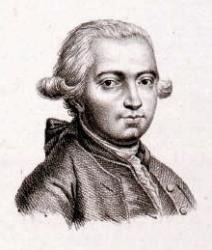
1716 - 1796 Person Name: Felice Gieadini Topics: Adoration; Children Piety in; Christ Communion with; Christ Worshiped; Christians Blessedness of; Church Beloved of God; Church Triumph of; God Adored and Exalted; God Glorious; God Kingly Character of; Gospel Gracious Fruit of; Gospel Invitations of ; Joy Exhortations to; Meekness; Mercy of God Celebrated; Praise By Saints; Praise Calls to; Praise For Works of Providence; Praise For Work of Redemption; Salvation God's Gift; Thanksgiving Declared; Worship Call to ; Worship Private Composer of "ITALIAN HYMN" in The Psalter Felice Giardini, born in Italy. When young, he studied singing, harpsichord, and violin. He became a composer and violin virtuoso. By age 12 he was playing in theatre orchestras. His most instructive lesson: While playing a solo passage during an opera, he decided to show off his skills by improvising several bravura variations that the composer, Jommelli, had not written . Although the audience applauded loudly, Jomelli, who happened to be there, went up and slapped Giardini in the face. He learned a lesson from that. He toured Europe as a violinist, considered one of the greatest musical artists of his time. He served as orchestra leader and director of the Italian Opera in London, giving concerts. He tried to run a theatre in Naples, but encountered adversity. He went to Russia, but had little fortune there, where he died.
John Perry
Felice Giardini
Charles L. Ford
b. 1830 Person Name: C. L. Ford Topics: Christian Work Author of "Earthly joys no longer please us" in New Christian Hymn and Tune Book Ford, Charles Lawrence, B.A., son of Mr. W. Ford, artist, of Bath, was born at Bath in 1830. Mr. Ford is a graduate of the London University, and is engaged in scholastic work. In 1862 he contributed several poetical pieces to Canon Baynes's Lyra Anglicana, in 1865 to his English Lyrics, and also to the Illustrated Book of Sacred Poetry, n.d. Mr. Ford's hymns and poems were collected and published as Lyra Christi, 1874.
From these works the following have come into common use:—
1. Father, for Thy kindest word. (1862.) Strength in Weakness.
2. Lord, from this time we cry to Thee. Christ the Guide of Youth.
3. O Thou, by Whom the balm is borne. In Affliction.
4. This is my Body which is given for you. Holy Communion.
--John Julian, Dictionary of Hymnology (1907)
Charles L. Ford
Edwin F. Hatfield
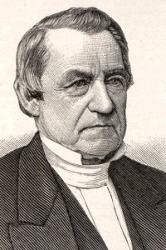
1807 - 1883 Topics: Christians Work Author of "Prayer for the intemperate" in Hymnal of the Methodist Episcopal Church Hatfield, Edwin Francis, D.D., was born at Elizabethtown, New Jersey, Jan. 9, 1807, and educated at Middlcbury College, Vermont, and at Andover. From 1832 to 1835 he was pastor of the 2nd Presbyterian Church, St. Louis. In 1835 he removed to New York, where he was at first pastor of 7th Presbyterian Church, and then of the North Presbyterian Church (1856-63) in the same city; and in 1864 he was appointed special agent to the Union Theological Seminary, New York. He also held from 1846 the appointment of Stated Clerk of the Presbyterian General Assembly. He died at Summit, New Jersey, Sept. 22, 1883. His hymnological knowledge was extensive. His publications include:—
(1) Freedom's Lyre; or, Psalms, Hymns, and Sacred Songs, for the Slave and his Friends, N. Y., 1840, to which he contributed 24 hymns under the signature of “E. F. H."; (2) The Church Hymn Book for the Worship of God, N. Y., 18t2, in which are 10 of his hymns; and (3) Chapel Hymns, N. Y., 1873. (4) The Poets of the Church. Biographical Sketches of Hymn Writers, with Notes on their Hymns, New York, 1884. This was a posthumous publication, and is far from being accurate. His hymns and psalm versions in common use include:—
1. Come, bless Jehovah's name. (1837.) Psalms 134.
2. Come, let us gladly sing. (1837.) Psalms 95.
3. Hallelujah, praise the Lord. (1837.) Psalms 150.
4. How perfect is Thy law. (1837.) Psalms 19.
5. How sweetly breaks the Sabbath dawn. (1840.) Sunday.
6. My Shepherd's name is love. (1837.) Psalms 23.
7. 0 sing hallelujah, praise ye the Lord. (1837.) Psalms 146.
8. Thee, Thee, we praise, 0 God, and now. (1871.) A paraphrase of the Te Deum.
9. 'Tis Thine alone, Almighty Name. (1872.) Temperance.
10. Why, 0 God, Thy people spurn! (1837.) Psalms 60.
11. To God the Father, Son. Doxology. In Freedom's Lyre, 1840. It is widely used.
These hymns and psalm versions are all in his Church Hymn Book, 1872, and the dates appended above are from that collection. No. 10 was published in his Freedom's Lyre, 1810, No. 25. [Rev. F. M. Bird, M.A.]
-- John Julian, Dictionary of Hymnology
Edwin F. Hatfield
John Burton

1803 - 1877 Person Name: J. Burton Topics: The Christian Life Conflict, Work and Growth Author of "O thou that hearest prayer" in Westminster Sabbath School Hymnal, a collection of hymns and tunes for use in sabbath-schools and social meetings Burton, John, jun, a popular hymn-writer for children, was b. July 23, 1803, at Stratford in Essex, in which place he carried on business as a cooper for about 50 years. He died in 1877. Mr. Burton was a member of the Congregational body, and a Deacon of the Chapel where he attended, His contributions to hymnody began in 1822, when he sent his first production to the Evangelical Magazine. He continued to contribute to that and other periodicals for many years, his signature in the former being "Essex, J. B.," and in the Child's Companion, J. B. Essex." His publications are:—
(1) One Hundred Original Hymns for the Young, 1850; (2) Hymns for Little Children, 1851; (3) The Child-Life of David; (4) The Book of Psalms in English Verse, 1871; (5) Scripture Characters in Verse, &c.
His Hymns for Little Children, containing 54 pieces, has been republished in Philadelphia, U.S.A., as My Own Hymn Book. He also contributed to the Union Hymn Book for Scholars, 1840. Some of his hymns have attained a measure of popularity, including “Thou that nearest prayer," "Come, let us sing our Maker's praise," and many others. In addition, the following are also in common use:—
1. Children who are gone to glory. Saints' days.
2. Children, you have gone astray. Invitation. Published in the Child's Companion, April, 1834, and his One Hundred Hymns, 1850, &c.
3. Come, let us sing our Maker's praise. For Orphans. In his One Hundred Hymns, 1850, No. 86, in 6 stanzas of 4 lines.
4. Father of mercies, hear; On us, &c. Influence implored. In his One Hundred Hymns,1850, No. 97, in 6 stanzas of 4 lines; and partly rewritten in 2 stanzas of 8 lines. In Kennedy, 1863, No. 1209, beginning: "Father Of mercies, hear The song Thy children raise.
5. God is love, delightful truth. Love of God. Published in the Child's Companion, Aug., 1835, and again in his One Hundred Hymns, 1850, No. 20, in 5 stanzas of 4 lines. It is given in the Silver Street Sunday School Hymn Book 1880.
6. Happy would it be for me. Early Piety.
7. Hark! a still small voice is heard. Christ's love for Children. This appeared in the Child's Companion, July, 1836, and the revised edition of the Union Hymn Book,&c, 1850, No. 14, in 4 stanzas of 6 lines. It is in various collections, including the Methodist Sunday School Hymn Book, 1879, and others.
8. Heavenly Father, we draw near Thee. Sunday Schools. Published in his One Hundred Hymns,1850, &c.
9. I often say my prayers. Prayer. Also from the Union H. Book, I84o; into Major's Bk. of Praise, &c.
10. None is like God, who reigns above. Omnipresence. Dated 1849, and given in his One Hundred Hymns, No. 4, in 5 stanzas of 4 lines. It is reprinted in several school collections, as Stevenson's School Hymnal, 1880, No. 139.
11. Pilgrims we are and strangers. Life a Pilgrimage. From the Evangelical Magazine, 1829, 5 stanzas of 8 lines, commencing “Now let our praise be given," and headed "The Pilgrim's Song," into the Baptist Psalms & Hymns, 1858, No. 553, in 4 stanzas of 8 lines, st. i. being omitted.
12. Remember thy Creator now. Early Piety. From the Child's Companion, Sept. 1833, into his One Hundred Hymns, 1850, and the Methodist Sunday School Hymn Book, No. 243.
13. Saviour, while my heart is tender. Early Piety. Also from the One Hundred Hymns. It is in the Baptist Hymnal, 1879; Horder's Congregational Hymns, 1884; and others.
14. That kind eye which cannot sleep. Omniscience. But little known.
15. The Lord attends when children pray. Prayer. 1st printed in the Child's Companion, July, 1835, and again in Dec. 1837, and in the revised edition of the Union Hymn Book, 1840; and his One Hundred Hymns, 1850, No. 31, in 5 stanzas of 4 lines. It is in several collections, including Dr. Allon's Children's Worship, 1878, &c.
16. Though we are young our sins are great. Lent. In the revised edition of the Union Hymn Book, 1840; and his One Hundred Hymns, 1850 (in the latter as "Though I am," &c), No. 9, in 6 stanzas of 4 lines. It is included in Major's Book of Praise, &c.
17. We do not love Thee as we ought. Lent. In the Methodist Sunday School Hymn Book, 1879, No. 286.
18. Why did Jesus come from heaven? Passiontide. From his One Hundred Hymns, 1850, No. 61, in 4 stanzas of 6 lines, into Major's Book of Praise.
19. Why should we spend our youthful days? Youthful Piety. Printed in the Child's Companion, May, 1835, in his One Hundred Hymns, 1850, and as No. 252 in the Methodist. Sunday School Hymn Book, 1879.
--John Julian, Dictionary of Hymnology (1907)
John Burton
Hans Leo Hassler

1564 - 1612 Person Name: Hans Leo Hassler, 1564-1612 Topics: The Celebration of the Gospel Story Good Friday; Christian Year Passion/Palm Sunday; Christian Year Good Friday; Cross; Cross of Jesus Christ; Jesus Christ Crucifixion; Death of Jesus Christ; Jesus Christ Redemptive work Composer of "PASSION CHORALE" in One Lord, One Faith, One Baptism Hans Leo Hassler Germany 1564-1612. Born at Nuremberg, Germany, he came from a family of famous musicians and received early education from his father. He then studied in Venice, Italy, with Andrea Gabrieli, uncle of Giovanni Gabrieli, his friend, with whom he composed a wedding motet. The uncle taught him to play the organ. He learned the polychoral style and took it back to Germany after Andrea Gabrieli's death. He served as organist and composer for Octavian Fugger, the princely art patron of Augsburg (1585-1601). He was a prolific composer but found his influence limited, as he was Protestant in a still heavily Catholic region. In 1602 he became director of town music and organist in the Frauenkirche in Nuremberg until 1608. He married Cordula Claus in 1604. He was finally court musician for the Elector of Saxony in Dresden, Germany, evenually becoming Kapellmeister (1608-1612). A Lutheran, he composed both for Roman Catholic liturgy and for Lutheran churches. He produced two volumns of motets, a famous collection of court songs, and a volume of simpler hymn settings. He published both secular and religious music, managing to compose much for the Catholic church that was also usable in Lutheran settings. He was also a consultant to organ builders. In 1596 he, with 53 other organists, had the opportunity to examine a new instrument with 59 stops at the Schlosskirche, Groningen. He was recognized for his expertise in organ design and often was called on to examine new instruments. He entered the world of mechanical instrument construction, developing a clockwork organ that was later sold to Emperor Rudolf II. He died of tuberculosis in Frankfurt, Germany.
John Perry
Hans Leo Hassler
Johann Sebastian Bach
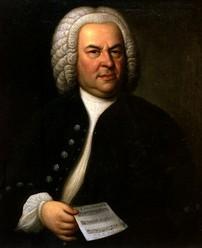
1685 - 1750 Person Name: J. S. Bach, 1685-1750 Topics: The Celebration of the Gospel Story Good Friday; Christian Year Passion/Palm Sunday; Christian Year Good Friday; Cross; Cross of Jesus Christ; Jesus Christ Crucifixion; Death of Jesus Christ; Jesus Christ Redemptive work Harmonizer of "PASSION CHORALE" in One Lord, One Faith, One Baptism Johann Sebastian Bach was born at Eisenach into a musical family and in a town steeped in Reformation history, he received early musical training from his father and older brother, and elementary education in the classical school Luther had earlier attended.
Throughout his life he made extraordinary efforts to learn from other musicians. At 15 he walked to Lüneburg to work as a chorister and study at the convent school of St. Michael. From there he walked 30 miles to Hamburg to hear Johann Reinken, and 60 miles to Celle to become familiar with French composition and performance traditions. Once he obtained a month's leave from his job to hear Buxtehude, but stayed nearly four months. He arranged compositions from Vivaldi and other Italian masters. His own compositions spanned almost every musical form then known (Opera was the notable exception).
In his own time, Bach was highly regarded as organist and teacher, his compositions being circulated as models of contrapuntal technique. Four of his children achieved careers as composers; Haydn, Mozart, Beethoven, Mendelssohn, Schumann, Brahms, and Chopin are only a few of the best known of the musicians that confessed a major debt to Bach's work in their own musical development. Mendelssohn began re-introducing Bach's music into the concert repertoire, where it has come to attract admiration and even veneration for its own sake.
After 20 years of successful work in several posts, Bach became cantor of the Thomas-schule in Leipzig, and remained there for the remaining 27 years of his life, concentrating on church music for the Lutheran service: over 200 cantatas, four passion settings, a Mass, and hundreds of chorale settings, harmonizations, preludes, and arrangements. He edited the tunes for Schemelli's Musicalisches Gesangbuch, contributing 16 original tunes. His choral harmonizations remain a staple for studies of composition and harmony. Additional melodies from his works have been adapted as hymn tunes.
--John Julian, Dictionary of Hymnology (1907)
Johann Sebastian Bach
Thomas Haweis
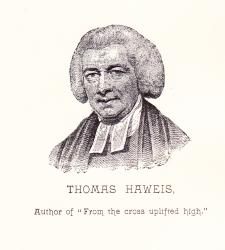
1734 - 1820 Person Name: T. Haweis Topics: Activity; Charity; Christians Duties; Church Work of; Communion of Saints At Lord's Table; Consecration Of Possessions Composer of "CHESTERFIELD" in Laudes Domini Thomas Haweis (b. Redruth, Cornwall, England, 1734; d. Bath, England, 1820) Initially apprenticed to a surgeon and pharmacist, Haweis decided to study for the ministry at Oxford and was ordained in the Church of England in 1757. He served as curate of St. Mary Magdalen Church, Oxford, but was removed by the bishop from that position because of his Methodist leanings. He also was an assistant to Martin Madan at Locke Hospital, London. In 1764 he became rector of All Saints Church in Aldwinkle, Northamptonshire, and later served as administrator at Trevecca College, Wales, a school founded by the Countess of Huntingdon, whom Haweis served as chaplain. After completing advanced studies at Cambridge, he published a Bible commentary and a volume on church history. Haweis was strongly interested in missions and helped to found the London Mission Society. His hymn texts and tunes were published in Carmino Christo, or Hymns to the Savior (1792, expanded 1808).
Bert Polman
============================
Haweis, Thomas, LL.B., M.D., born at Truro, Cornwall, 1732. After practising for a time as a Physician, he entered Christ's College, Cambridge, where he graduated. Taking Holy Orders, he became Assistant Preacher to M. Madan at the Lock Hospital, London, and subsequently Rector of All Saints, Aldwincle, Northamptonshire. He was also Chaplain to Lady Huntingdon, and for several years officiated at her Chapel in Bath. He died at Bath, Feb. 11, 1820. He published several prose works, including A History of the Church, A Translation of the New Testament, and A Commentary on the Holy Bible. His hymns, a few of which are of more than ordinary merit, were published in his
Carmina Christo; or, Hymns to the Saviour. Designed for the Use and Comfort of Those who worship the Lamb that was slain. Bath, S. Hayward, 1792 (139 hymns), enlarged. London, 1808 (256 hymns). In 1794, or sometime after, but before the enlarged edition was published, two hymns "For the Fast-day, Feb. 28, 1794," were added to the first edition. These were, "Big with events, another year," and "Still o'er the deep the cannon's roar."
The most popular and widely used of his hymns are, "Behold the Lamb of God, Who bore," &c.; "Enthroned on high, Almighty Lord"; and “O Thou from Whom all goodness flows." The rest, all being from Carmina Christo, first edition 1792, are:—
1. Dark was the night and cold the ground. Gethsemane.
2. From the cross uplifted high. Christ in Glory.
3. Great Spirit, by Whose mighty power. Whitsuntide.
4. Submissive to Thy will, my God. Resignation.
5. The happy morn is come. Easter.
6. Thou Lamb of God, that on the tree. Good Friday. The hymn, "Thy Head, the crown of thorns that wears," in Stryker & Main's Church Praise Book, N. Y., 1882, begins with st. ii. of this hymn.
7. To Thee, my God and Saviour, My heart, &c. Praise for Redemption.
--John Julian, Dictionary of Hymnology (1907)
Thomas Haweis
A. H. Mann
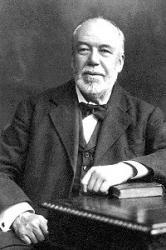
1850 - 1929 Person Name: Arthur H. Mann Topics: Brotherhoods and Men's Guilds; Christ Presence of; Church Work; Communion at the Lord's Table; Temptation of Christians Composer of "ANGEL'S STORY" in The Hymnal Arthur Henry ‘Daddy’ Mann MusB MusD United Kingdom 1850-1929. Born at Norwich, Norfolk, England, he graduated from New College, Oxford. He married Sarah Ransford, and they had five children: Sarah, Francis, Arthur, John, and Mary. Arthur died in infancy. Mann was a chorister and assistant organist at Norwich Cathedral, then, after short stints playing the organ at St Peter’s, Wolverhampton (1870-71); St. Michael’s Tettenhall Parish Church (1871-75); and Beverley Minster (1875-76); he became organist at King’s College Chapel, Cambridge (1876-1929), Cambridge University organist (1897-1929), and music master and organist at the Leys School, Cambridge (1894-1922). In addition to composing an oratorio and some hymn tunes, he was music editor of the Church of England Hymnal (1894). In 1918 he directed the music and first service of “Nine lessons & carols” at King’s College Chapel. He was an arranger, author, composer, and editor. His wife, Sarah, died in 1918. He died at Cambridge, England.
John Perry
A. H. Mann
Edward M. Fuller
Topics: Christian Work Composer of "[Patiently hear all the burdens of life]" in The Gospel Hymn Book Early 20th Century
Edward M. Fuller


 My Starred Hymns
My Starred Hymns

